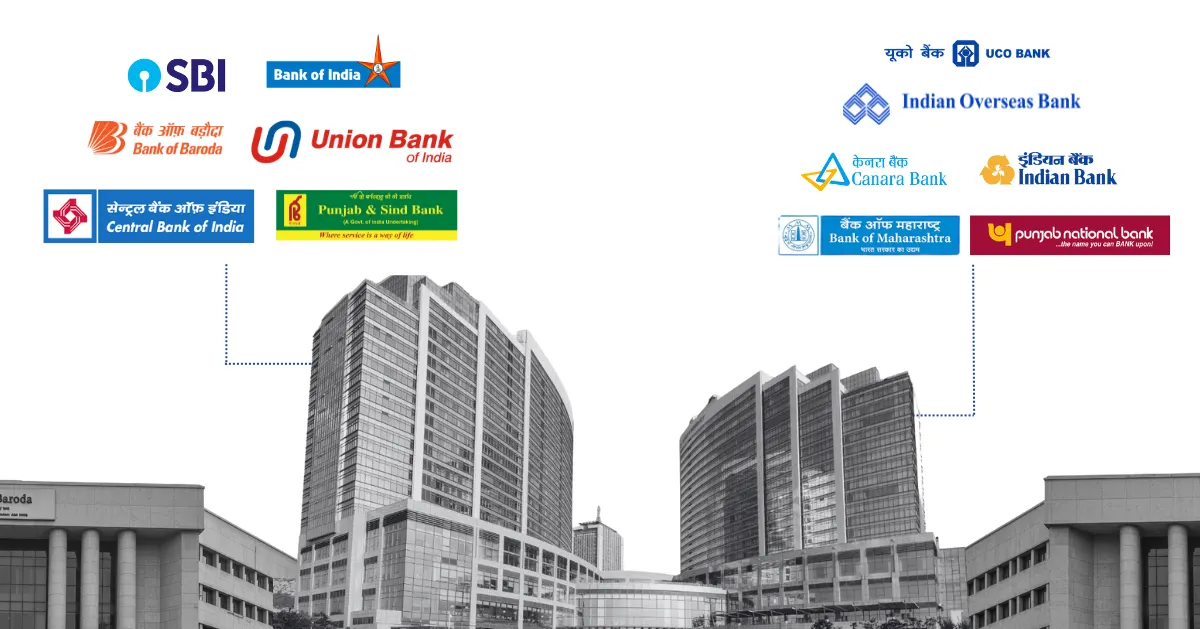
Introduction
In today’s world, access to credit is a significant factor driving economic development, especially in underdeveloped areas. However, traditional banking systems often fail to serve low-income individuals and small business owners, restricting their opportunities to grow. This is where microfinance and microcredit become pivotal, offering solutions that aim to increase financial inclusion.
Both microfinance and microcredit are terms that are frequently used interchangeably, but they are distinct in their purpose and application. Microfinance covers a broad range of financial services, including loans, savings, insurance, and financial literacy. On the other hand, microcredit specifically refers to small loans provided to entrepreneurs and small business owners who do not have access to traditional banking services.
This blog will provide a detailed analysis of the differences between microfinance and microcredit, explore their significance, benefits, and challenges, and demonstrate how these financial tools are transforming lives and fostering economic growth.
What is Microfinance?
Microfinance is a comprehensive financial service that caters to low-income individuals and small entrepreneurs, who often lack access to traditional financial institutions. It is designed to promote financial inclusion by offering a variety of services such as loans, savings, insurance, and financial education. The goal of microfinance is not only to provide financial assistance but also to empower individuals and small businesses to become self-sufficient.
Microfinance institutions (MFIs) play a significant role in this process, as they offer these services to people in rural and marginalized areas. Through microfinance, individuals are given the opportunity to build assets, protect themselves against financial risks, and improve their economic conditions.
Types of Microfinance Services
- Microloans: These are small loans provided to individuals or entrepreneurs who lack collateral. They are typically used for starting or expanding a business.
- Micro-savings: Microfinance allows individuals to open savings accounts with small deposit requirements, enabling them to save money securely.
- Micro-insurance: Low-income people can access insurance products through microfinance, providing coverage for health, life, and business risks.
- Financial Literacy Programs: MFIs often provide education on how to manage money, invest wisely, and avoid debt.
Examples of Microfinance
- A woman in a rural area takes a microloan of ₹10,000 to start a small clothing business, using the funds to purchase materials and sell garments to local customers.
- A farmer receives micro-insurance that helps protect against crop loss due to unexpected weather conditions.
What is Microcredit?
Microcredit refers specifically to small loans that are offered to individuals who do not have access to traditional banking services. The primary aim of microcredit is to empower individuals by providing them with the financial resources they need to start or grow small businesses, thus creating opportunities for economic mobility.
Microcredit is often offered without the need for collateral, and the repayment terms are designed to be flexible and manageable. Borrowers are usually required to make small, frequent repayments, making it easier for them to meet their financial obligations.
Benefits of Microcredit
- Empowerment: Microcredit helps individuals, especially women, become financially independent by providing capital to start or expand businesses.
- Encouragement of Entrepreneurship: By offering small loans, microcredit enables entrepreneurs to set up businesses, leading to job creation and community development.
- Financial Inclusion: It plays a key role in providing financial services to people who are excluded from the traditional banking system.
- Reduced Dependency on Predatory Lenders: Microcredit reduces the reliance on informal lending sources that often come with high interest rates and exploitative terms.
Example of Microcredit
- A man living in a village with no access to conventional banks receives a microcredit loan to buy equipment for his small carpentry business. With this loan, he can now take on more clients and increase his earnings.
Key Differences Between Microfinance and Microcredit
To better understand the distinction, let’s break down the primary differences between microfinance and microcredit:
| Aspect | Microfinance | Microcredit |
| Definition | Includes loans, savings, insurance, and training | Provides only small business loans |
| Scope | Broader financial services | Focused only on credit |
| Collateral Requirement | Generally no collateral needed | No collateral required |
| Purpose | To provide financial stability and empowerment | To provide capital for micro-businesses |
| Target Group | Low-income individuals, small entrepreneurs | Small business owners, farmers, artisans |
| Repayment Structure | Often structured to match borrower income | Small, frequent repayments |
As highlighted in the table, the key distinction is that microfinance encompasses a broader set of financial services, while microcredit is a specific form of small loan targeted at entrepreneurs.
Who Can Avail Microfinance and Microcredit Services?
Microfinance and microcredit services are primarily designed to cater to:
- Small Business Owners: Those who lack access to traditional credit facilities.
- Women Entrepreneurs: Microfinance institutions prioritize women, offering them the resources they need to start and grow businesses.
- Farmers and Artisans: These individuals often struggle with obtaining loans and insurance from traditional banks.
- Low-Income Individuals: People who need financial services but are excluded from the formal financial system.
Benefits and Challenges of Microfinance and Microcredit
Benefits of Microfinance and Microcredit are:
- Encourages Entrepreneurship: Microfinance provides the capital necessary for individuals to start or expand their businesses.
- Promotes Financial Independence: By providing financial resources, individuals can become self-reliant.
- Empowers Women: Many MFIs focus on empowering women entrepreneurs, enabling them to achieve financial independence.
- Reduces Poverty: Microfinance and microcredit help individuals and families improve their income, leading to an enhanced standard of living.
- Flexible Repayment Options: These financial tools offer manageable repayment schedules, making it easier for borrowers to meet their obligations.
Challenges of Microfinance and Microcredit
- High-Interest Rates: Some MFIs charge higher interest rates, making it harder for borrowers to repay their loans.
- Risk of Over-Indebtedness: Borrowers may take on multiple loans from different sources, leading to financial strain.
- Limited Funding: Some microfinance institutions have a cap on the amount they can lend, limiting the impact of their services.
- Operational Challenges: Managing small loans in remote, rural areas can be difficult for MFIs, due to logistical issues and lack of infrastructure.
Impact of Microfinance on Financial Inclusion
Financial inclusion means ensuring that everyone has access to basic financial services. Microfinance plays a crucial role in this by offering small business loans, savings accounts, and insurance to underserved populations. By providing access to financial services, microfinance contributes to the economic development of marginalized communities, promoting entrepreneurship, reducing poverty, and enhancing financial security.
Conclusion
The difference between microfinance and microcredit lies in their scope. While microfinance encompasses a wide range of financial services such as loans, savings, insurance, and financial education, microcredit focuses specifically on small loans for entrepreneurs. Both play vital roles in promoting financial inclusion and empowering individuals to break the cycle of poverty.
For low-income individuals and small business owners, microfinance institutions offer a pathway to financial independence. These institutions provide not only loans but also education, savings options, and insurance, helping people become more financially stable and self-sufficient.
If you’re looking to start a microfinance institution or need help with setting up financial services, Registerkaro can guide you through the legal compliance process and help you explore funding options. Contact us today for expert assistance in setting up and managing your financial services!
Starting a microfinance institution or getting involved in microcredit can be a complex process, but Registerkaro is here to help. Our expert team can assist you with legal compliance, setting up services, and navigating funding options. Contact us today to learn more and get personalized assistance.
Contact Us Today:
Email: support@registerkaro.in
Call: +918447746183
Frequently Asked Questions (FAQs)
- Can microcredit be used for personal expenses?
- Microcredit is usually intended for business purposes rather than personal expenses. However, some lenders may offer flexibility depending on the borrower’s situation.
- Microcredit is usually intended for business purposes rather than personal expenses. However, some lenders may offer flexibility depending on the borrower’s situation.
- Are microfinance institutions regulated in India?
- Yes, the Reserve Bank of India (RBI) regulates microfinance institutions to ensure fair lending practices and protect borrowers from exploitative interest rates.
- Yes, the Reserve Bank of India (RBI) regulates microfinance institutions to ensure fair lending practices and protect borrowers from exploitative interest rates.
- What is the maximum loan amount under microcredit?
- The loan amount typically ranges from ₹10,000 to ₹1,00,000, depending on the borrower’s needs and financial background.
- The loan amount typically ranges from ₹10,000 to ₹1,00,000, depending on the borrower’s needs and financial background.
- Do microfinance institutions provide insurance?
- Yes, many microfinance institutions offer micro-insurance to protect against financial risks, including life, health, or business-related uncertainties.
- Yes, many microfinance institutions offer micro-insurance to protect against financial risks, including life, health, or business-related uncertainties.
- What is the repayment period for microcredit loans?
- Microcredit loans typically have a short repayment period, ranging from a few months to two years, with frequent installment payments based on the lender’s terms.
- Microcredit loans typically have a short repayment period, ranging from a few months to two years, with frequent installment payments based on the lender’s terms.
- Can I get a microloan without collateral?
- Yes, microloans are typically unsecured loans, meaning you don’t need collateral to access them.
- Yes, microloans are typically unsecured loans, meaning you don’t need collateral to access them.
- How do I choose the best microfinance institution?
- Look for institutions with transparent terms, fair interest rates, and a focus on supporting entrepreneurship and financial education.
- Look for institutions with transparent terms, fair interest rates, and a focus on supporting entrepreneurship and financial education.
- How does microcredit help reduce poverty?
- Microcredit helps individuals start or expand small businesses, increasing their income and improving their living standards.
- Microcredit helps individuals start or expand small businesses, increasing their income and improving their living standards.
- Is there a limit to the number of microloans I can take?
- The number of loans you can take depends on the policies of the microfinance institution and your ability to repay.
- The number of loans you can take depends on the policies of the microfinance institution and your ability to repay.
- Can microfinance help me improve my financial literacy?
Yes, many microfinance institutions offer financial literacy programs to help borrowers understand budgeting, saving, and managing debt.




